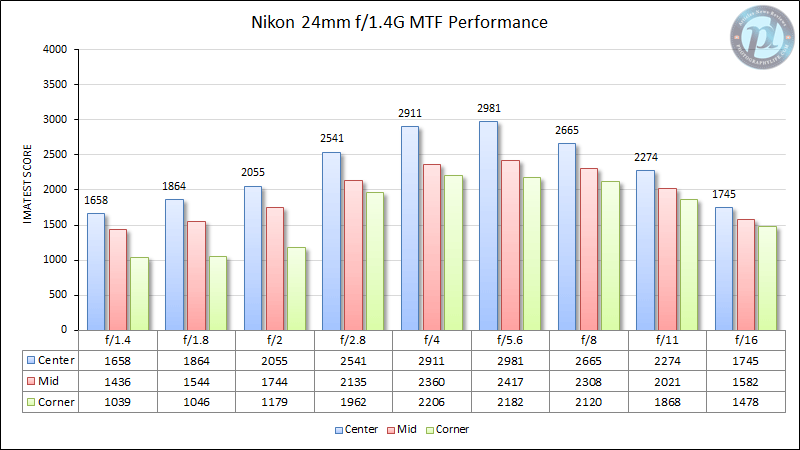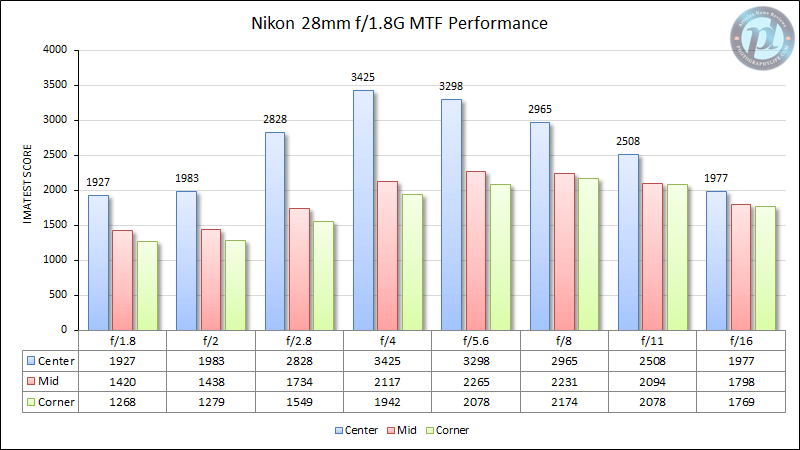Nikon 28mm f/1.4E vs Nikon 24mm f/1.4G
First, let’s take a look at how the new Nikon 28mm f/1.4E fares against the older, but still excellent Nikon 24mm f/1.4G:


We can see big differences right away. The new Nikon 28mm f/1.4E is very sharp wide open and when stopped down to f/1.8, it takes off big time, whereas the Nikon 24mm f/1.4G only gets to that level at f/2.8. The Nikon 24mm f/1.4G needs to be stopped down to f/4 to get the best overall performance and at that aperture, both lenses do very well. However, the 28mm f/1.4E is just from a different league – its center sharpness is probably going to make that lens suitable on even a 100 MP sensor, whereas the 24mm f/1.4G will clearly be challenged on anything beyond 45 MP.

Nikon 28mm f/1.4E vs Nikon 28mm f/1.8G
Next, let’s take a look at how the Nikon 28mm f/1.4E does when compared to its older and lighter counterpart, the Nikon 28mm f/1.8G:


Again, the Nikon 28mm f/1.4E looks absolutely incredible in comparison. The best overall performance for the 28mm f/1.8G is at f/4 and f/5.6. While the Nikon 28mm f/1.8G is of great value, it does suffer from more noticeable field curvature and it also has focus shift issues. Still, it delivers great value when compared to the pricey 28mm f/1.4E.

Nikon 28mm f/1.4E vs Sigma 24-35mm f/2 Art
I thought it would be a good idea to compare the 28mm f/1.4E to the Sigma 24-35mm f/2 Art lens at 28mm. I personally really enjoyed shooting with the Sigma and found it of great value, because it was like a three-in-one lens with excellent performance characteristics. Let’s take a look at how it compares to the 28mm f/1.4E:


As you can see, the Sigma 24-35mm f/2 is a superb lens overall, especially when stopped down. It cannot compete with the Nikon 28mm f/1.4E wide open, but once stopped down to f/2.8, it yields excellent mid-frame and edge performance, which is very impressive. Its sweet spot is f/4 and that’s where it delivers the best overall performance.
Obviously, there is a stop of difference between the Sigma 24-35mm f/2 Art and Nikon 28mm f/1.4E, so this is not necessarily and apples-to-apples comparison. However, if one needs a versatile zoom lens and does not need a large maximum aperture of f/1.4, the Sigma is of great value.

Table of Contents